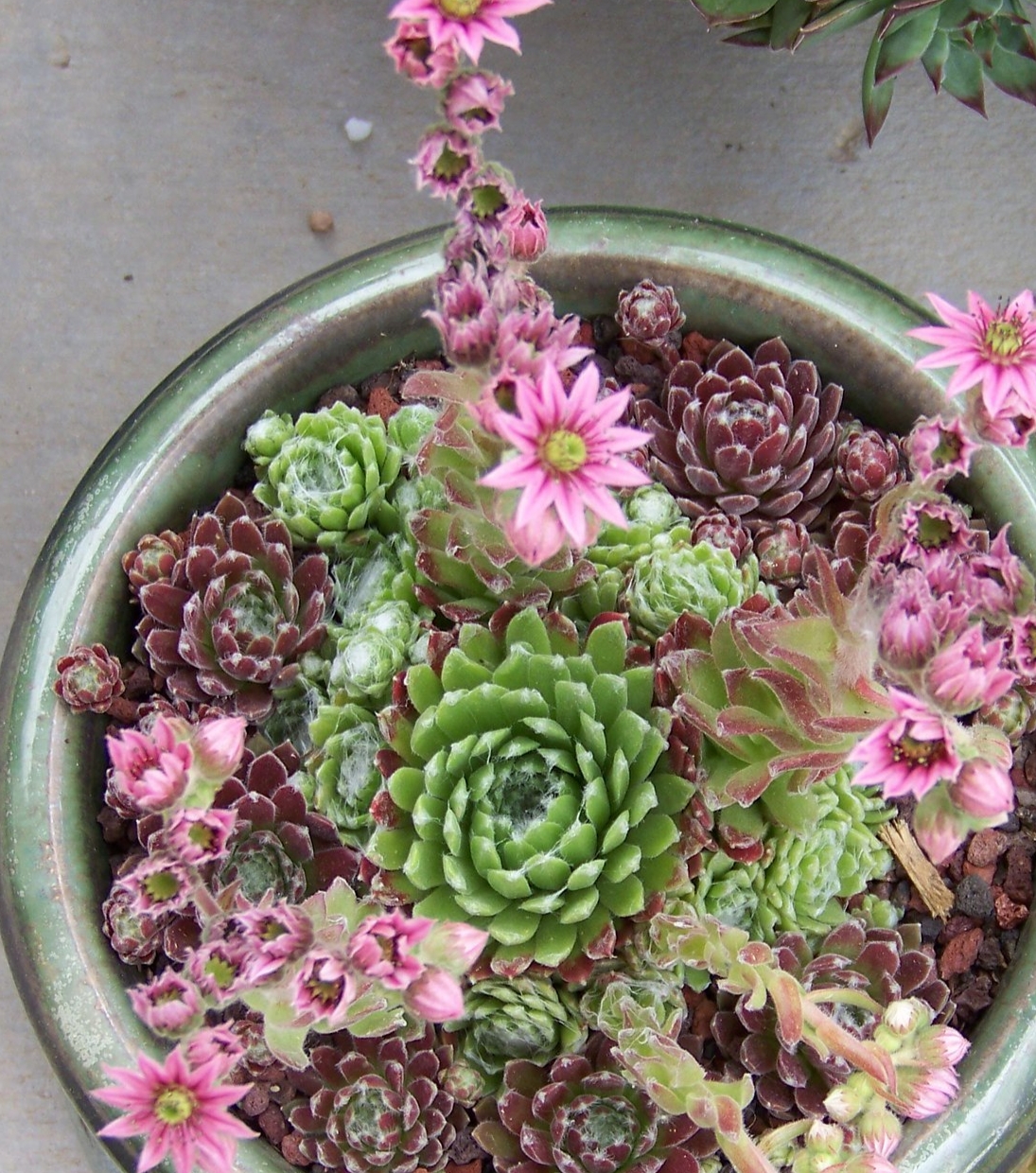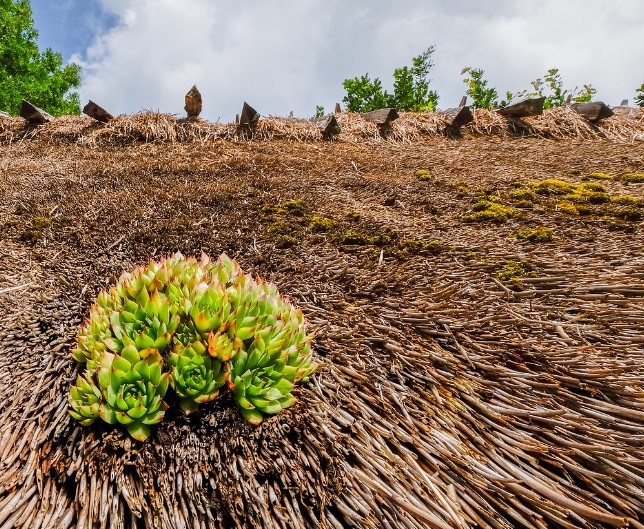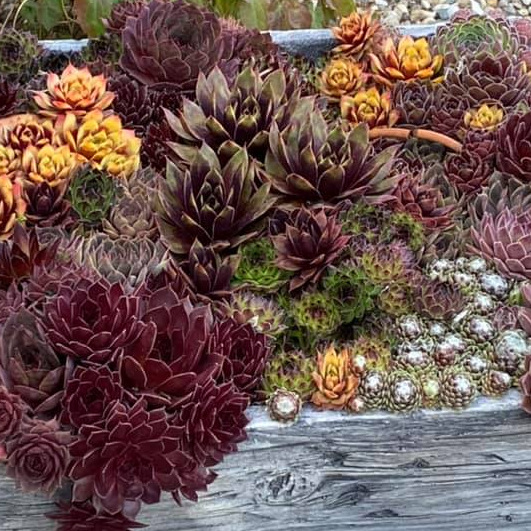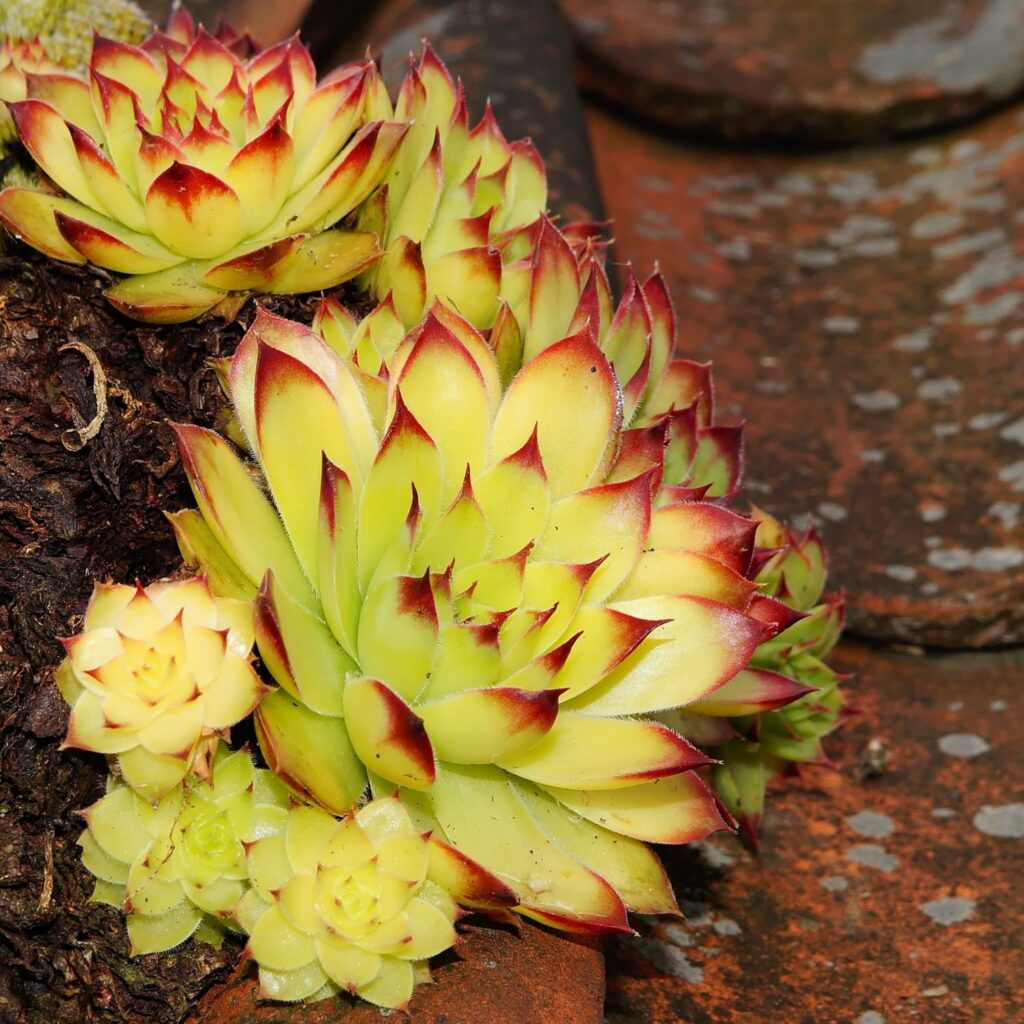Uncategorized
Houseleeks
When I was a lad, some seventy-five years ago, my village, like much of the world at the time, had no sewerage system. My granddad Glenn, like everyone else, had an outside dunny. This dunny had a terracotta tile roof. On this roof grew a garden of houseleeks (Sempervivum). When I asked my granddad why they were growing on the roof of his lavatory he told me that they had been put there to prevent lightning strikes whilst people were sitting on the loo. Fortunately for me the houseleeks did their job and kept generations of Glenns safe and sound.
During ancient Roman times the common houseleek, Sempervirens tectorum, was planted on thatched roofs. The water stored in their succulent leaves protected the houses from fire damage. Sempervivum means “always living” in botanical latin and the specific name tectorum means on roofs so Sempervirum tectorum means always living on roofs.



I hardly gave the genus a second thought during the decades that followed until when recently I saw six varieties of Sempervivum offered for sale by a wholesale plant propagator. They were all new varieties propagated by tissue culture.
There are around 40 species of Sempervivum all of which grow wild on rocky hillsides and mountains from Morocco in North Africa to Spain and eastward to Iran. All are perennial. All have the ability to store water in their thick succulent leaves allowing them to flourish on hot sun-drenched rocks and barren stony ground. In cultivation Sempervivum make handsome foliage rosettes which, if several varieties are grown together, create “a mosaic of patterns, colours and textures”
All the species of Sempervivum are easily grown in any sunny well drained, even parched parts of the garden. They make excellent pot plants as long as they are grown outside and in as sunny a position as possible. In spite of their name house leeks are not successful as indoor plants.
It takes a year or two for the individual rosettes to grow large enough to flower, in the mean while producing many offsets. A mature rosette will produce a 15cm tall flower stem bearing up to six small sunflower-like blooms in shades of pink. Whilst the flowering rosettes die soon after, they leave behind so many new rosettes that Sempervivum have been given the common name hens and chickens.
